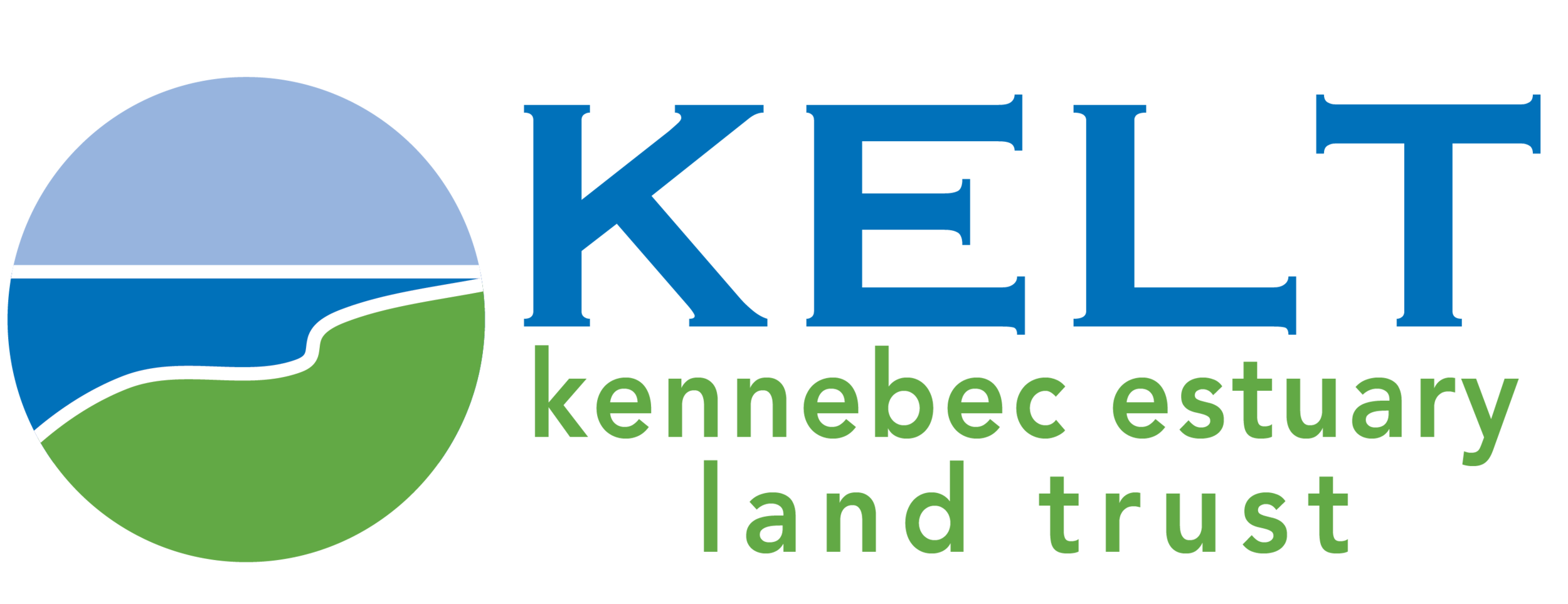Little River Methane Monitoring
Mud. Cattails. More mosquitoes than should be possible. At first it might be difficult to see the value in such a landscape. But it turns out that salt marshes such as the one located on KELT’s Little River preserve on Georgetown Island provide numerous environmental benefits. Salt marshes trap sediment, act as a filter for pollutants, protect dry land from storm surges, and provide a home for commercially important marine species.
Additionally, salt marshes tend to be excellent systems for storing carbon so it’s not released into the atmosphere as a greenhouse gas. This is because all the cattails and other marsh plants take in CO2 during photosynthesis. Then, as the plants begin to decay, the plant matter containing carbon is buried in the soil. Tidal waters help keep oxygen levels low in the soil, which leads to the plants breaking down very slowly, so the carbon stays in the soil. As a result, preserving tidal salt marsh habitat can be seen as a way of trying to mitigate the effects of climate change by sequestering atmospheric carbon.
However, it turns out that salt marshes are a double edged sword in the fight to reduce greenhouse gases in the atmosphere; if they are treated poorly they will begin to release massive amounts of carbon rather than store it. In the open air, microbes will use oxygen to break down plants and gain energy. However, in environments like salt marshes, where there isn’t a lot of oxygen in the mud, microbes have to use less efficient compounds to do the same thing. When sulfate is available, they use a process called sulfate reduction to make energy. When there is tidal flow to a marsh, plenty of sulfate from ocean water gets into the site. However, if tidal flow to a marsh is cut off, microbes are forced to opt for a different process called methanogenesis, which releases methane into the atmosphere as a byproduct. Methane, or CH4, happens to have a global warming potential 25 times that of carbon-dioxide.
This phenomenon of tidal restriction leading to methane emissions was exactly the case of the northwestern corner of Little River Marsh until February of 2018, when a restoration project took place in order to restore tidal flow into the marsh. The hope is that with tidal flow restored, methane emissions from the marsh will begin to decrease and carbon sequestration will begin to increase.
A team of students and professors from Bates College is spending the summer working on data collection at the site in order to monitor the gas emissions. I had the pleasure of meeting up with them in late June to observe their procedure. We met by the side of Indian Point Road before donning waders and bug nets and entering the marsh via a small access trail.
Upon reaching the area of the testing sites, the team got to work. The procedure was simple enough. Four stainless steel rings, each about 15 inches in diameter, had been previously placed on the surface of the muck at various points in the marsh. Once the team arrived at a given ring, they placed a clear, four foot tall plastic tube on top of the ring. The tube had the exact same diameter as the ring, so when the two were joined this created a sealed chamber within the tube. A small fan was placed at the top of the tube, pointing down, in order to cycle air within the chamber. Additionally, a device measuring air temperature and humidity hung from a small string at the top of the chamber. A small hole in the side of the tube allowed the Bates students to insert a needle and extract samples of air for later analysis in the lab.
The Bates team carefully conducts their procedure in the marsh.
While performing this procedure, the team members stood on top of lightweight metal benches balanced on foam blocks at either end in order to avoid stepping into the mud near the rings, as this could interfere with the results by compressing the sponge of the marsh and causing more methane to surge from the muck and into the tube.
By the end of the summer, the Bates team should have some data to show and hopefully be able to give KELT a better idea of how effective the restoration project was at reducing methane emissions.



